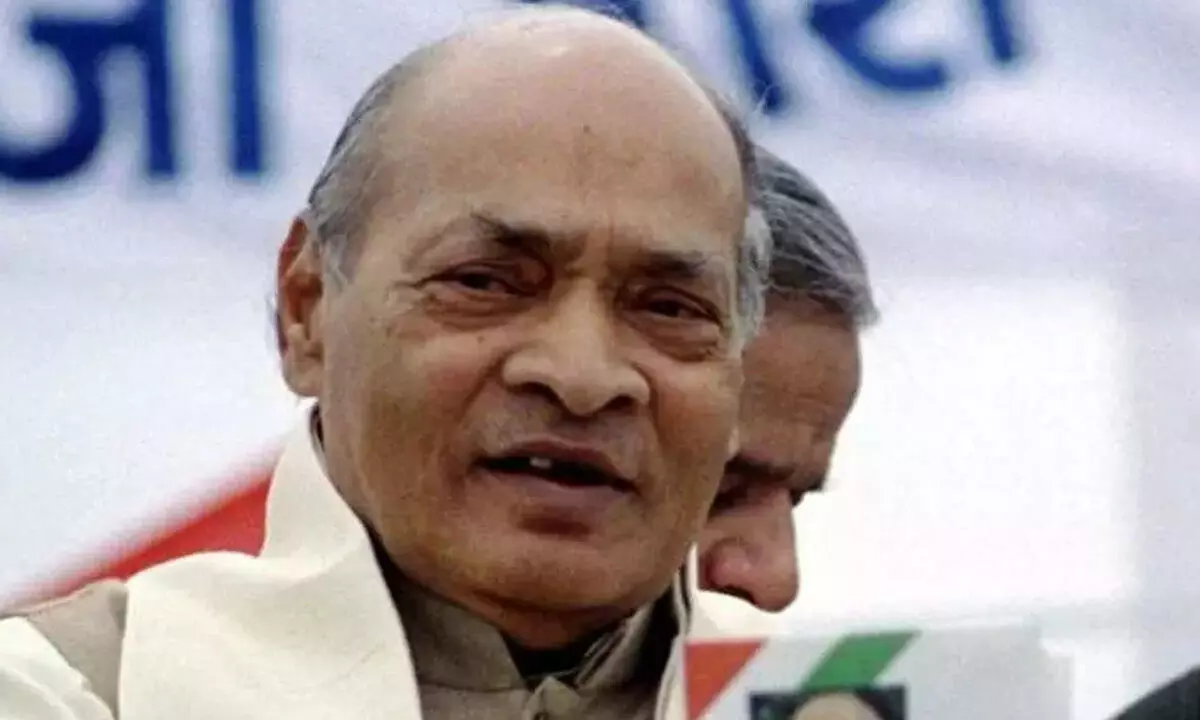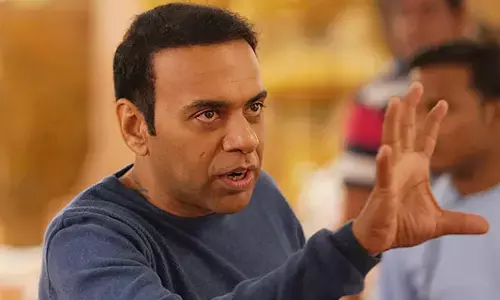PV paved way for lord Ram temple

In face of double standards, his legacy as a true statesman remains untarnished
In the heart of Ayodhya, where the sacred river Sarayu flows, stands the magnificent Ram Mandir, a symbol of faith, unity, and the enduring struggle of millions of Hindus throughout centuries. The grandeur of this temple is a testament to the indomitable spirit of the Bharath vasis, transcending political affiliations and embracing the inspirational force of Lord Ram. There is no doubt that the lion’s share of credit should go to the Modi-led BJP government.
However, as we celebrate the fruition of this monumental achievement, it is essential to reflect on the pivotal role played by PV Narasimha Rao in the complex narrative that led to the construction of the Ram Mandir.
Ever since the opening of temple gates in 1986 and subsequent Shilanyas in 1989 by the Congress party with the blessings of Rajiv Gandhi, Ramajanma Bhoomi was brought to the centre stage. P V Narasimha Rao inherited the issue with full-blown controversy. In 1992 when tensions were at their peak, the then PM demonstrated a nuanced approach to the Ayodhya dispute. His words, “We can fight BJP but not Ram,” echoed a commitment to finding a peaceful resolution to the longstanding conflict. In his first Independence Day speech in 1991, he envisioned a magnificent temple for Lord Ram and a grand mosque for Muslims through peaceful negotiations. If the negotiations failed, the verdict of the Supreme Court would prevail, he declared.
The events of December 6, 1992 witnessed the demolition of the Babri structure in a fit of frenzy by the karsevaks. P V Narasimha Rao faced criticism from the so-called secular parties with accusations of being a mute spectator. The blame persisted even as the Supreme Court characterised the incident as the most shameful act post-independence and convicted the then Chief Minister Kalyan Singh. The Liberhan Commission absolved PV of any wrongdoing and went on to say that he did exactly as per the provisions of the Indian Constitution.
However, amidst all the raging charges and counter-charges, PV swiftly moved to acquire 67 acres of land around the disputed area through an ordinance on January 7, 1993, most famously known as ‘The Acquisition of Certain Area at Ayodhya Ordinance 1993’ designating it as a sensitive area. This strategic move eventually facilitated the construction of the grand Ram Mandir we witness today.
The years passed, and in 2019, the Supreme Court delivered a verdict acceptable to all parties involved. Declaring the demolition as an impulsive act, the CBI court put an end to all the criminal proceedings finally bringing a quietus to the long-drawn conflict and clearing the way for the magnificent Ram temple.
Ironically, despite PV finding himself blamed by some political parties for their own vested interests, his efforts in procuring the 67 acres of land and guiding the dispute to resolution were pivotal and cannot be undermined. It is crucial to recognise his proactive role in bringing the communities to the negotiating table. His navigational skills in negotiating the complexities of the Ayodhya dispute, laid the groundwork for the Bhavya Mandir we celebrate today. His commitment to resolving the conflict is evident from the thousands of Sadhus and Sants he met and the number of hours he spent with the heads of the Muslim community.
In the face of political double standards, PV’s legacy as a true statesman remains untarnished. His secular credentials, coupled with a steadfast commitment to building the Ram Mandir, showcase a leader who believed in separating politics and religion. As history unfolds, let us remember PV as a visionary leader whose efforts bore fruit in the form of a magnificent temple, and whose legacy extends beyond the confines of political drama.














